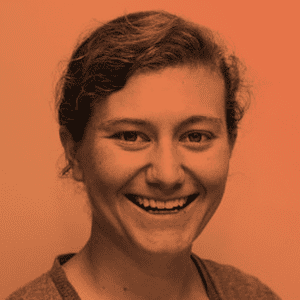
The WELL — Where Online Community Began
How did virtual communities start? Learn the history of online communities and its legacy for how you interact with your members.
What happens if everyone in the world (at least, everyone with internet) has access to the same platform and can interact with one another?
In 2016, we have a pretty good idea of what happens. We’ve all been part of a similar experiment — think of all big social media outlets or online communities: Reddit, Quora, Twitter, LinkedIn, Facebook, etc. Amazing things happen when we’re connected — community has the ability to really empower members and create strong loyalty for a platform.
But that gets me thinking: how did virtual communities start?
In many ways, we take virtual communities for granted. But even I (a millennial) remember a day before they were the norm (and the day before everyone had cell phones). Pick your poison — Facebook, LinkedIn, Reddit, Quora, your organization’s community — it hasn’t been around for longer than 15 or 20 years.
Who first thought of making the internet social? What did that look like?
Where it all began
About 31 years ago, back in February 1985, one of the first virtual communities — and now the oldest, continually run virtual community — launched. It was called the Whole Earth ‘Lectronic Link, otherwise known as The WELL.
The website was, and still is, very basic — partly because it was still the area of dial-up and slow processing computers — with no images or advertisements. When exploring it today, it feels like a time portal back to the ’80s or ’90s. At The WELL’s beginning, the only disclaimer for users was this: You Own Your Own Words (YOYOW). Financially, The WELL sustained itself by its monthly subscription-based model (all journalists had a free subscription).
It was started by Stewart Brand, a writer and philosopher, and Larry Brilliant, a physician and, after the WELL, former director at Google.org. They used the platform to create a dialog between the writers and readers of the Whole Earth Review. It didn’t take long before conversations expanded to encompass everything, creating a revolutionary community; it’s even where Harold Rheingold coined the term, “virtual community.” To quote The WELL’s about page, it’s “widely known as the primordial ooze where the online community movement was born.” After launch, it quickly became a hub for writers, journalists, futurists, thinkers and, somewhat randomly Deadheads (the most hardcore Grateful Dead fans. They used The WELL to coordinate and talk about all things Grateful Dead).
As The WELL grew, it became the home for certain cyber-subcultures of the ‘80s and ‘90s, forming totally new types of connections among people — some relationships were completely virtual while others played out both on- and off-line. The few thousand people in the community bred a certain kind of internet/cyber intelligentsia that had never been seen before, melding both social/personal and professional in a new, unique way.
The grand hotel
It’s hard to even imagine exactly what the inside of The WELL must’ve looked like at its peak. How did these conversations and relationships play out?
Within the WELL are many “conferences” — sub-communities or discussions, based on topic. Some conferences are open to the public, most are members only, and some are private for only certain members. Nothing is anonymous, and everyone’s comments are traceable back to them; people may have usernames, but all users can track comments back to exactly who wrote them — it’s part of “You Own Your Own Words.”
Gail Anne Williams, a user turned long-standing community manager, described the conglomeration of conferences as a grand hotel in 1991:
“Sometimes [The WELL] felt like a town with neighborhoods, and sometimes it felt like a grand old hotel with grand halls and many rooms. This was a world entirely made of text, yet the feeling of being in a place was palpable. You were inside the book you were reading.
“In general, people drifted from place to place freely, and might show up in more than one part of the hotel on a given session when I wandered through, talking about politics in one conference room, casually helping somebody figure out [how] to add memory to a computer in another, trading side-splitting puns at the hotel bar, and making rash predictions about the future of human social networks around a grand old fireplace late in the evening. There were more parties going on in private rooms. Sometimes I’d hear from newcomers I didn’t know or participants I didn’t like, but they all used real names and acted like real people. My family and co-workers were not there, but could be if I helped them learn the complex command-line software that we all used to participate.”
Doesn’t that sound wonderful and also sort of foreign? At it’s peak, 10,000 people from around the world were part of this “hotel,” wandering from conference to conference, connecting and sharing ideas with each other.
The WELL today
But it didn’t stay this robust forever. In 1999, Salon Media Group bought The WELL and only six years later (in 2005) put it up for sale to “concentrate on other ventures.” When they weren’t able to sell it, they held onto the site for a few more years until 2012, when The WELL Group (a group of 11 investors and community participants) bought it for a reported $400,000.
Today, The WELL no longer has 10,000 members. Yet, several thousand people still belong, paying their monthly dues and conversing with each other. They even still uphold their “State of the Future” conversation every January, which is open to the general public.
So, although there are new, free options to converse and create community online, like Reddit and Quora, The WELL still has its cadre of dedicated users for which the community is invaluable.
The WELL’s legacy
The WELL’s history is fascinating, partly because it really shaped our concept of virtual communities. Before The WELL, we didn’t have a concept for a “virtual community.” It was also one of the first places community managers popped up online. Before The WELL, there weren’t online communities, so there weren’t any strategies for building community online — concepts and ideas we think about all the time now.
Although most people (today) haven’t heard of The WELL and very few people are still active on the platform, it has a big impact on everyone who connects online. It’s where cyber-theory became practice and where people learned that “real” community can be fostered by words shared on the internet.


